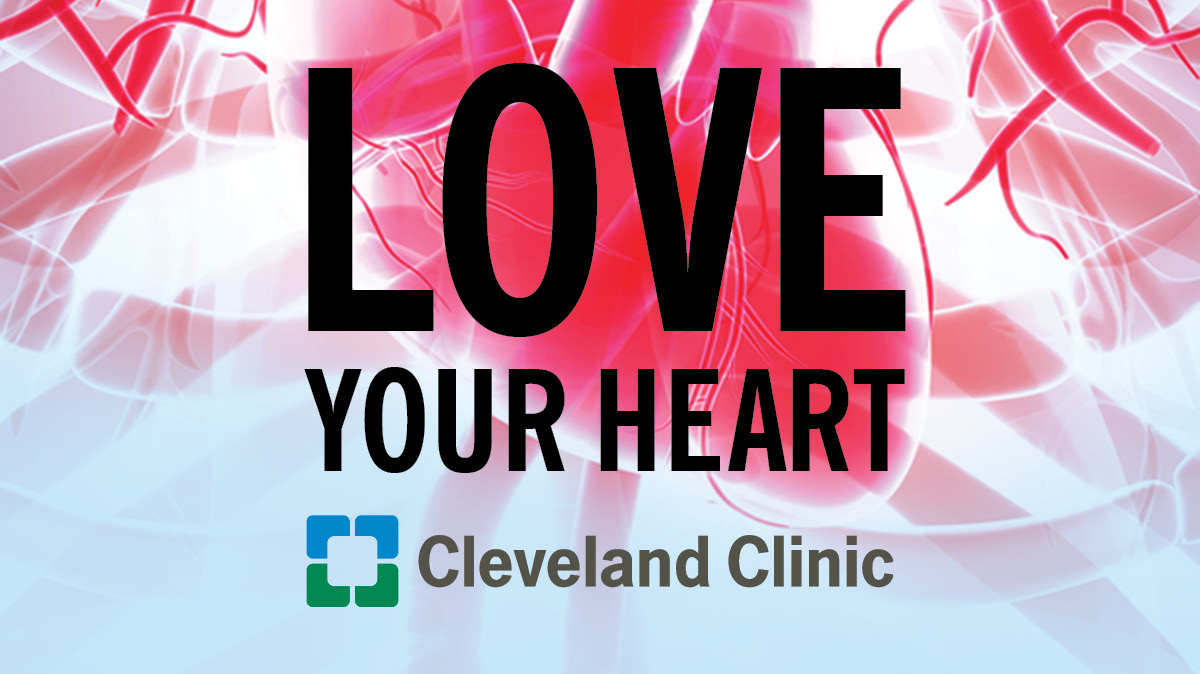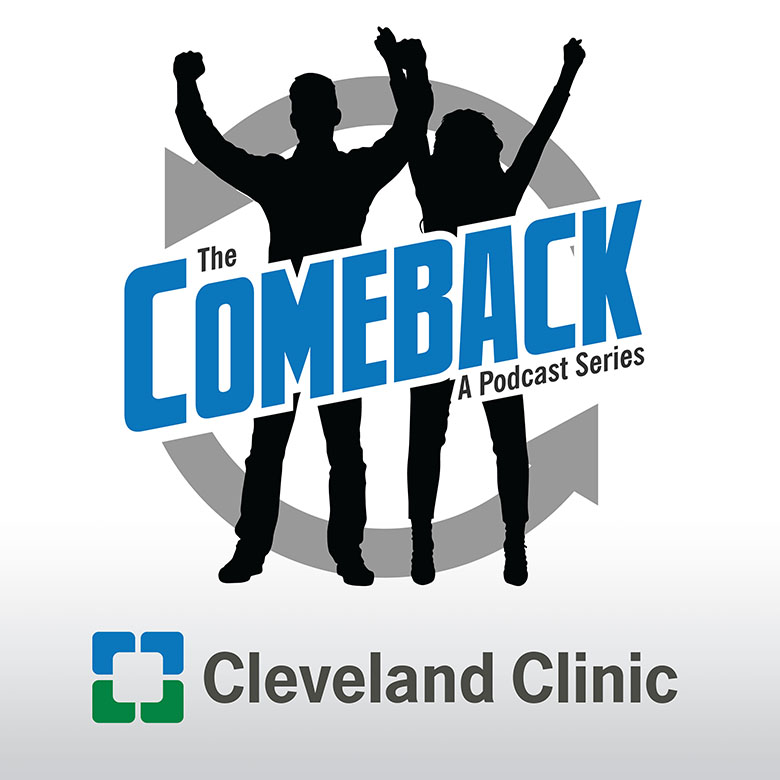Q&A: Panel Discussion About Screening of the Athletic Heart

School may be out for the summer, but student athletes are still attending practices for the next season. Summertime also provides masters level athletes a chance to enjoy the nice weather while practicing their sport. Dr. Tamanna Singh hosts a panel discussion with Drs. Richard Figler, Thomas Callahan, and Michael Emery about screening and preparedness for potential life-threatening heart conditions that affect athletes.
Learn more about the Sports Cardiology Center at Cleveland Clinic.
Subscribe: Apple Podcasts | Podcast Addict | Buzzsprout | Spotify
Q&A: Panel Discussion About Screening of the Athletic Heart
Podcast Transcript
Announcer:
Welcome to Love Your Heart, brought to you by Cleveland Clinic's Sydell and Arnold Miller Family Heart, Vascular and Thoracic Institute. These podcasts will help you learn more about your heart, thoracic and vascular systems, ways to stay healthy, and information about diseases and treatment options. Enjoy.
Tamanna Singh, MD:
Okay. So, our first question is, "Is there any talk about education for parents in recognizing signs, symptoms of sudden cardiac arrest death in early years, like adolescent years, of sports participation?"
Michael Emery, MD:
So, I think that's a good question for the PPE in general, and the PPE is about engaging the athlete and the family in education, not just checking boxes along the way. In terms of education, I think it's not just only important to educate the family about sudden cardiac arrest symptoms, but it's important to educate coaches, which has been a missing piece. And in fact, that's been such a missing piece that a lot of states have introduced legislation and passed legislation that coaches have to have some degree of training and education mandated about risk factors and signs and symptoms of sudden cardiac arrest and sudden cardiac death. What do you think about that, Rick, as a primary care physician?
Richard Figler, MD:
So, I agree that education is vital to this, and the more that people are aware of the signs and symptoms. This goes along with the education that we've put out there with concussions and heat-related illnesses. The problem is a lot of times we assume that too many people know what we think that they should know, and we don't take the opportunity to educate them because we think that it should just fall into place with everything else that they've learned. I just found this out, the Ohio High School mandates that each high school student has training in CPR and basic life support. It is very important, but obviously they can institute CPR in those settings and those situations. But if it's one and done, you may not necessarily get all that information.
Strength and conditioning coaches may be fresh out of school. We may anticipate that they know what to do with those conditioning workouts and helping recognize whether it's heat related illness or cardiovascular collapse, but it really comes down to not just education but holding them to make sure that they know and are tested on that to make sure what they know, what the next steps are, and involving them in emergency action plans. So, it takes a team effort, and survivability will definitely go up the more the athletic trainers, and you pointed out, that with the athletic trainers being on-site and having those emergency action plans, we're seeing increased survivability.
Tamanna Singh, MD:
Rick, you brought up a great point with respect to CPR and AED training and our athletes. So, what is the role? Or are you aware of any particular mandate with our college students? Do college athletes have to do CPR training?
Richard Figler, MD:
I don't know any mandates. I know that it's recommended, and I know that it's offered. I do know that there are courses offered, but there are specific courses in health and education, and I know that our athletic trainers at some of the universities are foremost in teaching those. And again, the more that people know, the better off and the more lives we're going to save.
Michael Emery, MD:
I think that's an important concept when we talk about shared decision-making. When I counsel athletes that have real cardiovascular disease and they have elected to return to play and the school has participated in that discussion to allow them to return to play, a lot of what we also then talk about is not just the school's emergency action plan, but it's that individual athlete's emergency action plan. We often recommend that the athlete gets their own AED, and the AED becomes part of their kit. They have their gloves, their bat, their AED that travels with them, so they don't have to rely on someone else having an AED.
But then I also push that the team, their team and their teammates, get certified in basic CPR and use of an AED because they're the ones who are going to spend the most time with them and may have to rescue them if that's the case. I think in general, what we see is what Dr. Figler noted, is that the emergency action plans that are in place are probably more likely going to be used on a bystander than an athlete, but that's fine. That's the benefit of an emergency action plan. There's zero controversy in emergency action plans and how well they work despite the controversy in ECG screenings.
Tamanna Singh, MD:
Great. Tom, I have a question for you. So, the causes of sudden cardiac death, and I think oftentimes people think hypertrophic cardiomyopathy is that number one cause, but we're starting to see that it's more structurally normal hearts and electrical abnormalities that are probably precipitating arrest and death, is that something that you're seeing? And as an electrophysiologist, what is your approach when you do see any sort of athlete perhaps coming in with a long QT or maybe even more commonly, like a pre-excitation pathway?
Thomas Callahan, MD:
So, very good questions. In terms of the frequency of these different abnormalities, it's hard for the individual practitioner to really find the patterns because the event rates are so rare. So as an electrophysiologist, I'm very tuned into the channelopathies and those sort of primary arrhythmia events. But it's difficult, I think, to pare down exactly where the frequencies lie, just as an individual practitioner. In terms of pre-excitation, we actually see a fair bit of that and fortunately are able to get a lot of people back into sport and play. We are able to get these people back to play. Sometimes it's with an ablation, sometimes just doing some simple studies to define that pathway to conduction characteristics and document that it's not a dangerous pathway.
Tamanna Singh, MD:
Yeah. And you highlight a great point. I think oftentimes when we think about certain rhythm issues, not necessarily related to cardiac arrest and death, we're very used to using medical management or medications as our number one therapy strategy. But oftentimes with our athletes, particularly if it's a pre-excitation or an atrial flutter, atrial tachyarrhythmia, we oftentimes will go straight to ablation to get these people back to what they love doing. So, our electrophysiologists like you are critical whenever we have those abnormal heart rhythms that we've got to deal with.
This is more of a question, I think, for all of you because we have multiple disciplines up here, and whenever I quote our AHA/ACC guidelines, they're from 2015, and I think there's been a shift in the athlete mentality, the cardiologists, the sports medicine, our specialist mentality. What kinds of things would you want to see now incorporated into those guidelines, which as Mike had referred, typically talked about the bread and butter, that cardiomyopathy is a little congenital, a little electrical? What are we missing?
Michael Emery, MD:
I'll start that one, I guess. Right. They're seven years old now, so there is an underlying shift that those will be updated in the next few years. I think that the shift is away from the paternalistic even more. The 2015 guidelines put in the 2A, 2B, but there's no real strong emphasis on shared decision-making. There's some bits and pieces in there. I think you're going to see some pretty big change in the hypertrophic cardiomyopathy section. There's more and more about participation in larger growing registries about participating with well-treated channelopathies, and I emphasize that well-treated channelopathies very strongly. So, I think that's what we're going to see is a big shift into shared decision-making and how to do shared decision-making. I wouldn't be surprised if there's an entire new taskforce just dedicated to shared decision-making because it's a complicated process to do well.
Thomas Callahan, MD:
You talked already about how high intensity sports may place individuals with certain types of cardiac and anomalies or cardiac conditions at increased risk, and so I think perhaps there can be more done in terms of risk stratifying based on the intensity of the activity and the participant engagement.
Richard Figler, MD:
Yeah. I think when it comes down to it, we're ultimately responsible for the clearance of these athletes to get back out and making it as safe as possible for them to do the sport that they love. We deal with a lot of different athletes. I mentioned the mental health ramifications of disqualifying an athlete and de-identifying that athlete as who they are and who they think they were going to be, especially when it comes to the mention of, "I'm going to be a collegiate athlete. I'm going to be a collegiate athlete," and we tell them no.
I think one of the bigger risks is having these shared discussions about how do we know definitively that they're not going to have a problem? And we don't know that, right? So, this has opened up the lines of communication, but I think there's going to be more discussions about that in the future about loosening those strings because we know that we have survivability in those athletes, that if we're there and they have that episode, then we can help them. Unfortunately, if they're alone in their bed at night, we may not be able to.
Tamanna Singh, MD:
All excellent points. I think as a female provider, I always think about how we manage our pregnant athletes, how do we manage them? Then another, I think then we talked a little bit about our para-athletes. I mean, what about our athletes with congenital abnormalities? I think right now we have a lot of restrictions, which are based upon just either the lack of data, lack of experience and understanding of what can exercise do for individuals who have more complex congenital heart disease? So, I'm really excited to see those things perhaps be included or touched upon, and then even just starting to get a little bit with the times in terms of incorporating perhaps our technology, seeing is that something that we can use for diagnostic purposes, perhaps therapeutic purposes, whatnot? So, I think there's a lot of different directions that we can go.
Announcer:
Thank you for listening. We hope you enjoyed the podcast. We welcome your comments and feedback. Please contact us at heart@ccf.org. Like what you heard? Subscribe wherever you get your podcasts or listen at clevelandclinic.org/loveyourheartpodcast.

Love Your Heart
A Cleveland Clinic podcast to help you learn more about heart and vascular disease and conditions affecting your chest. We explore prevention, diagnostic tests, medical and surgical treatments, new innovations and more.


